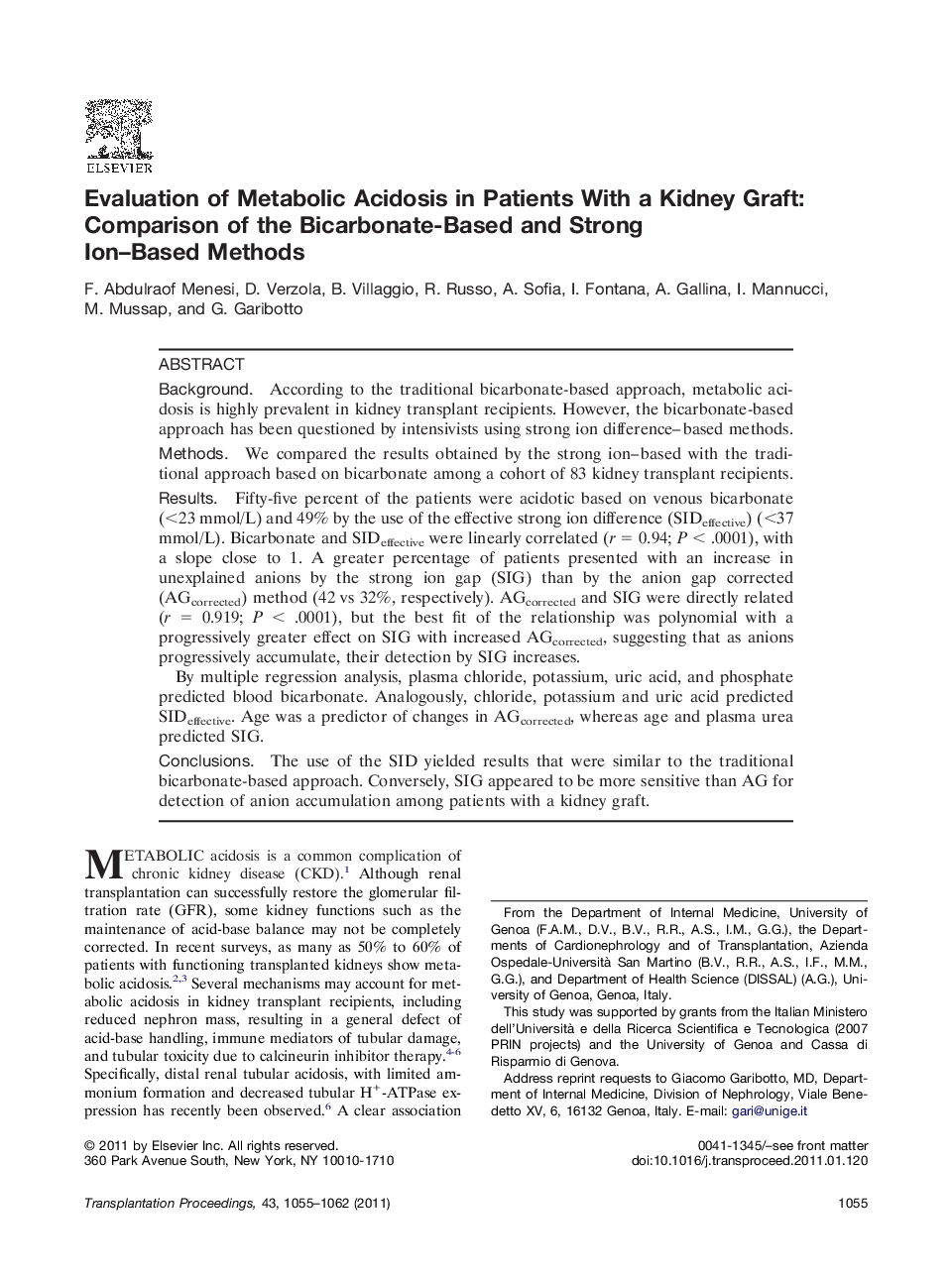| Article ID | Journal | Published Year | Pages | File Type |
|---|---|---|---|---|
| 6249445 | Transplantation Proceedings | 2011 | 8 Pages |
BackgroundAccording to the traditional bicarbonate-based approach, metabolic acidosis is highly prevalent in kidney transplant recipients. However, the bicarbonate-based approach has been questioned by intensivists using strong ion difference-based methods.MethodsWe compared the results obtained by the strong ion-based with the traditional approach based on bicarbonate among a cohort of 83 kidney transplant recipients.ResultsFifty-five percent of the patients were acidotic based on venous bicarbonate (<23 mmol/L) and 49% by the use of the effective strong ion difference (SIDeffective) (<37 mmol/L). Bicarbonate and SIDeffective were linearly correlated (r = 0.94; P < .0001), with a slope close to 1. A greater percentage of patients presented with an increase in unexplained anions by the strong ion gap (SIG) than by the anion gap corrected (AGcorrected) method (42 vs 32%, respectively). AGcorrected and SIG were directly related (r = 0.919; P < .0001), but the best fit of the relationship was polynomial with a progressively greater effect on SIG with increased AGcorrected, suggesting that as anions progressively accumulate, their detection by SIG increases.By multiple regression analysis, plasma chloride, potassium, uric acid, and phosphate predicted blood bicarbonate. Analogously, chloride, potassium and uric acid predicted SIDeffective. Age was a predictor of changes in AGcorrected, whereas age and plasma urea predicted SIG.ConclusionsThe use of the SID yielded results that were similar to the traditional bicarbonate-based approach. Conversely, SIG appeared to be more sensitive than AG for detection of anion accumulation among patients with a kidney graft.
